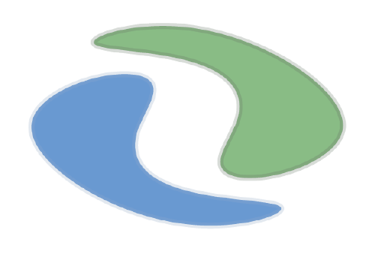Taraxacum officinale
Botanical Profile
The common dandelion (Taraxacum officinale Weber ex F.H. Wigg.) is a perennial herb of the family Asteraceae. It forms a basal rosette of deeply toothed leaves, a hollow flowering stem bearing bright yellow composite flower heads, and a long tap root capable of storing resources and regenerating the plant year after year. The name “dandelion” derives from the French dent de lion (“lion’s tooth”), referring to the jagged margins of the leaves. Its deep root system and prolific seed-production equip it to thrive across a wide range of disturbed or semi-wild habitats.
Geography & Habitat
Native to temperate regions of Europe and Asia, dandelion has become naturalised worldwide, including North and South America and Australia. It favors open, sunny or lightly shaded sites—lawns, meadows, pastures, roadsides, early successional fields and even cracks in pavement. It tolerates a wide spectrum of soil types—from sandy to loamy to modest clay—though it thrives best in moderately fertile, well-drained soils with sufficient moisture. Its ability to grow from near sea level to alpine conditions underlies its global distribution and ease of cultivation.
Harvest Time
Leaves: Best harvested in early spring when new leaves are young and tender, before the plant invests heavily in flowering. A secondary harvest in early autumn can yield milder leaves after summer stress. Leaves harvested later in spring or summer tend to be tougher and more bitter due to fibre accumulation and latex content.
Roots: Typically harvested in late fall (after the plant has translocated sugars into the tap root) or early spring before vigorous top-growth returns. Roots dug when soil is moist allow easier extraction and better integrity of the tap root. Roots harvested in autumn often have higher inulin and storage carbohydrate content, making them suitable for drying or further processing.
Parts Used: Leaves & Roots
Leaves: Young leaves are edible and highly nutritious, supplying vitamins A, C and K plus minerals like calcium, iron and potassium. They may be eaten raw (in salads) or lightly cooked; older leaves may require blanching or sautéing to reduce bitterness.
Roots: The long tap root can be harvested, cleaned, sliced and dried for uses such as roasted “dandelion coffee”, tinctures, or herbal extracts. The root stores inulin (a prebiotic carbohydrate), triterpenes and other bioactives which contribute to its functional uses.
Phytochemistry
Dandelion is rich in bioactive compounds spanning several chemical categories:
Sesquiterpene lactones (e.g., taraxinic acid derivatives, ixerin D) which impart its characteristic bitterness and support digestive stimulation.
Triterpenes (e.g., taraxasterol, β-amyrin) with reported anti-inflammatory and hepatoprotective actions.
Phenolic acids (chlorogenic acid, caffeic acid, chicoric acid) and flavonoids (luteolin, apigenin, quercetin derivatives) which provide antioxidant, vascular and immune-modulating effects.
Inulin (a fructan polysaccharide) concentrated in the root, serving as a prebiotic and supporting gut microbiota and mild glycaemic regulation.
Vitamins and minerals, especially in the leaves, render the whole plant a nutrient-dense botanical.
Traditional & Medicinal Uses
Dandelion has a long history in European, Chinese, Native American and Ayurvedic herbal traditions. It has been used as a digestive tonic, diuretic, cholagogue (stimulating bile flow), liver supportive herb, spring “blood purifier” and nutritive green. Modern research supports many of these traditional uses:
Digestive tonic & bitter stimulant: The bitter sesquiterpene lactones encourage appetite and digestive secretions.
Liver & gallbladder support: Root preparations have been used historically to promote hepatic and biliary function.
Gentle diuretic: Leaf tea is traditionally consumed to increase urine output while replenishing potassium, distinguishing it from synthetic diuretics.
Anti-inflammatory & skin supportive: Used internally and topically for skin conditions, joint discomfort and mild inflammation.
Functional nutrition: As a nourishing green and root tonic, it bridges culinary and botanical medicine.
New Data: Cancer-cell Activity
Recent scientific studies have begun to explore dandelion’s anti-cancer potential. Several key findings are notable:
An aqueous dandelion root extract (DRE) induced programmed cell death in >95 % of colon cancer cells in vitro, and when administered orally in mouse xenograft models, reduced tumour growth by more than 90 %. PMC
Hydroalcoholic extracts and other solvent extracts of T. officinale showed inhibitory effects on breast, liver, pancreatic, lung, colorectal and ovarian cancer cell lines. PMC
A study on an aggressive breast cancer subtype (MDA-MB-231) found dose-dependent cytotoxicity: after 72 hours of exposure, the IC₅₀ dropped to ~3.45 mg/mL, indicating increasing sensitivity with time. SpringerLink
Extracts of dandelion root were shown to inhibit invasion and migration of glioblastoma cells by regulating proteolytic enzymes (MMP-2, MMP-9) and signalling pathways (p38 MAPK, JNK). wcrj.net
A review of the Taraxacum genus concluded that in‐vitro and some in‐vivo anticancer studies demonstrate the ability to induce cell death in liver, colon, leukemia and pancreatic cancer models. ScienceDirect
While these early results are promising—especially because many use “whole extract” rather than isolated compounds—they remain preliminary. Research in humans is lacking and no dandelion-based anticancer therapy is yet clinically approved. Still, these data underscore the potential of the plant as a non-toxic adjunct or preventive botanical worthy of further investigation.
Harvest & Handling Guidelines
Harvest plants from uncontaminated environments (away from sprayed lawns, highways or industrial runoff). Leaves can be picked early morning, rinsed gently and either used fresh or dried (shade drying or low-temperature dehydrator ≤40 °C). Roots should be dug with care to preserve the tap root, washed thoroughly to remove soil, cut longitudinally or into slices to facilitate drying, then stored in airtight, light-resistant containers to retain potency of inulin and volatile compounds.
Summary
The common dandelion is a globally-adapted, highly versatile herb whose leaves and roots both yield valuable nutritional and botanical uses. With a rich phytochemistry and growing evidence of medicinal—particularly anti-cancer—potential, it stands at the convergence of wild foraging, sustainable cultivation and functional herbal science. When harvested at the right time and processed with care, T. officinale offers a compelling botanical for both culinary and therapeutic domains.
References
Ovadje, P. et al. “Dandelion root extract affects colorectal cancer proliferation and survival through the activation of multiple death signalling pathways.” Oncotarget. 2016. Available at: https://pmc.ncbi.nlm.nih.gov/articles/PMC5341965/ PMC
“Hydroalcoholic extract of Taraxacum officinale induces apoptosis …” PMC. 2023. Available at: https://pmc.ncbi.nlm.nih.gov/articles/PMC10560329/ PMC
“Antioxidant and antimicrobial activities of Dandelion root extract (Taraxacum officinale) and its cytotoxic effect on MDA-MB-231 breast cancer cells.” SpringerLink. 2024. Available at: https://link.springer.com/article/10.1007/s42452-024-06419-7 SpringerLink
Rashidi I. et al. “Anti-invasion and anti-metastasis effects of Dandelion (Taraxacum officinale) hydroalcoholic extract on glioblastoma multiforme cell line model.” WCRJ. 2022;9:e2361. Free PDF: https://www.wcrj.net/article/2361 wcrj.net
“Taraxacum spp. in vitro and in vivo anticancer activity – A review.” ScienceDirect. 2022. Available at: https://www.sciencedirect.com/science/article/abs/pii/S2210803322000811 ScienceDirect
“Dandelion.” Memorial Sloan Kettering Cancer Center. Available at: https://www.mskcc.org/cancer-care/integrative-medicine/herbs/dandelion Memorial Sloan Kettering Cancer Center
“A comprehensive review of the benefits of Taraxacum officinale on …” SpringerOpen. 2021. Available at: https://bnrc.springeropen.com/articles/10.1186/s42269-021-00567-1 SpringerOpen


Medical Benefits
Usage
Stress / Anxiety / Mood
• Lowers cortisol, modulates HPA-axis
• May increase GABA and serotonin
• Clinical trials show reduced perceived stress and anxietyHormonal / Vitality Effects
• Increased testosterone and DHEA-S in overweight/aging malesAnti-Inflammatory / Antioxidant
• Reduces inflammatory markers (TNF-α, IL-6)
• Decreases oxidative stress (shown in animal & in vitro studies)Cognitive / Sleep Support
• Some studies report improved sleep quality, memory, and attentionMuscle Strength / Performance
• RCTs show increased strength and muscle gains when combined with resistance training
Stress / Anxiety / Mood
• 125–500 mg/day of standardized WS extract (root + leaf)
• Duration: 6–8 weeks
• Example: Sensoril® used in clinical trialsHormonal Support / Vitality
• ~21 mg withanolide glycosides/day (Shoden® extract)
• Duration: 8 weeks
• Shown effective in overweight menGeneral Wellness / Adaptogen
• 250–500 mg/day root extract
• Duration: 4+ weeks
• Start at lower dose; increase as toleratedSafety Ceiling (Healthy Adults)
• Up to 1000 mg/day root extract
• Duration: 4 weeks safely tested
• Longer-term use still needs more study


An open-label, single dose, safety and pharmacokinetic study of Withania somnifera root extract in healthy volunteers — PubMed. PubMed
A Randomized, Double-Blind, Placebo-Controlled, Crossover Study Examining the Hormonal and Vitality Effects of Ashwagandha in Aging, Overweight Males — PubMed. PubMed
Safety of Ashwagandha Root Extract: RCT in Healthy Adults — PubMed. PubMed
Effects of Withania somnifera Extract in Chronically Stressed Adults — PMC. PMC
Pharmacologic overview of Withania somnifera, the Indian Ginseng — PMC. PMC





